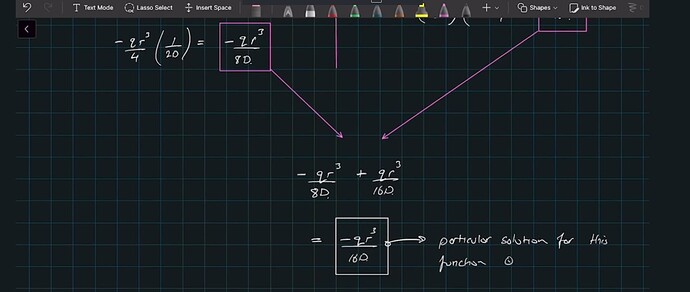Questions and discussion for this lecture live here. Fire away by hitting Reply below ![]()
Hi Sean,
First of all, i hope you are good and everything going smoothly. I just started plates and shells topic and i have a mathematical question actually. at time 8:57, when we were finding the particular solution, we solved the integrals without constants, why? i check with CHATGPT etc. but answer did not satisfy me to be honest, it said “constants are already counted in C1 and C2 in the homogenous solution.”, but here what we are doing is little bit different i believe.
Should not there be constants from integration as C3 and C4 and somehow we need to solve for them to find the specific particular solution lets say ?
Hi @m.burakcakir33 - good to see you back.
Yes, I can see why you might think there are constants of integration missing, since these integrations have no limits, but essentially, the ChatGPT explanation is correct.
You can think of the constants of integration C1 and C2 as wildcards, or placeholders. Because we’re evaluating them after evaluating the ‘Q integrals’, they will reflect the influence of that integral, in this case, -(qr^3)/(16D). So yes, we don’t need to evaluate separate C3 and C4 because we’re calculating C1 and C3 after already determining -(qr^3)/(16D).
I hope that helps.
Seán
